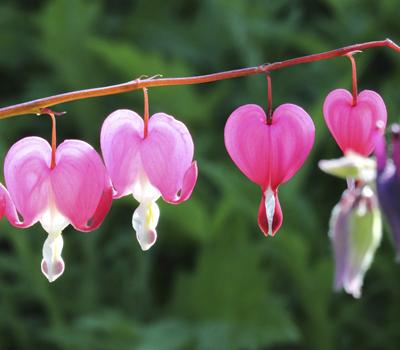Unpicking the language of love

Researchers in the Faculty of Humanities have been uncovering the many faces of love through the ages and around the world, from medieval love lyrics, to romance on film, to sex, marriage and monogamy over time.
Visiting fellow Dr Amanda Holton has been exploring early English love-poetry. Her work on the language of love in medieval and sixteenth-century poems unpicks the relationship between rhyme-words and the presentation of love in poetic language.
Dr Holton challenges the assumption that meaning comes before form: that poets decide what they want to say and then pour that content into the vessel of a poetic form, and find rhymes which fit around what they want to say. She argues that this is the wrong way round. There is a core of rhyme-words which are extremely popular in love-poetry. Once a rhyme-word is chosen, the poet is unavoidably led towards certain other words and concepts simply because they just so happen to rhyme with the original word, so the arbitrary availability of rhyming words helps to dictate the content of the poem and the experience of love. The limited rhyme-resources of English essentially render certain clusters of words and ideas almost inevitable, and generate a particular take on love.
For example, the concept of the ‘pain’ of love is commonly used in medieval love poetry, leading to the rhymes 'attain', 'obtain' and 'gain'. As a consequence poets are strongly drawn into the idea that feeling pain earns the lover the right to get what he wants.
A large number of other rhyme-words available relate to power and status: ‘sovereign’, ‘disdain’, ‘restrain’, ‘retain’, and ‘constrain’, often used to characterise the object of the poet’s affection and her power over him, while ‘(in) vain’, ‘(cannot) refrain’ and ‘remain’ repeatedly construct the lover’s powerlessness and helplessness.
Pain is also strongly linked with the word ‘complain’. Without pain, not only would the lover lack self-definition, he would also have nothing to say; pain is the stimulus for verbal expression and, by extension, for composing poetry, and this close relationship between pain and utterance is arguably triggered by the arbitrary fact of pain and complain happening to rhyme.
Over time the Valentine’s poem has become a staple of romantic language, evolving in response to societal and cultural changes. Professor Dan Brown’s research on the place of women in Victorian science has uncovered the genre of the scientific ‘mock valentine’, a parodic genre that blends science with traditional romance tropes.
Electric Valentine: Telegraph Clerk ♂ to Telegraph Clerk ♀
by James Clerk Maxwell
"The tendrils of my soul are twined
With thine, though many a mile apart;
And thine in close-coiled circuits wind
Around the needle of my heart.
"Constant as Daniell, strong as Grove;
Ebullient through its depths like Smee;
My heart pours forth its tide of love,
And all its circuits close in thee.
"O tell me, when along the line
From my full heart the message flows,
What currents are induced in thine?
One click from thee will end my woes."
Through many an Ohm the Weber flew,
And clicked this answer back to me, ---
"I am thy Farad, staunch and true,
Charged to a Volt with love for thee."
This 1872 poem by the physicist James Clerk Maxwell mischievously combines the female-gendered love romance of the Valentine poem with the conventionally masculine romance of science and technology. Designated quasi-mathematically as ♂ and ♀, simple functions of gender and sexuality, the lovers are represented as cyborgs, integral to the instrument they operate. The batteries, galvanometer and wires of the telegraph are accordingly identified with their hearts and nerves. Building upon recent discoveries that found electric current conducted by nerve tissue, the poem suggests that passionate love is informed, perhaps even determined, by involuntary nerve impulses, and that all can all be measured by such electrical values as Ohms, Webers, and Farads.
More related research:
Dr Fiona Woollard has been working on the philosophy of sex and despite the philosophical puzzle presented by the idea of staying with one partner for life, make the case for fidelity in her article ‘in defence of monogamy’.
Dr Devorah Baum explores the question ‘What Kind of Love Do We Need?’ and examines ‘mother love’ and Judaism as part of her new book Feeling Jew(ish).
Dr Niamh Cullen charts the history of love, relationships and marriage in Italy throughout the 1950s and 60s. Her work with diaries and memoirs explores how ordinary emotions, attitudes and experiences were impacted by the transition from a rural society to an urban, consumer society. Her recent article explores 'the jealous Latin lover' in Italian culture.
Dr Louis Bayman explores how romance plots are captured in Italian cinema.
Dr Brian McElwee will give a talk at Southampton City Art Gallery on 3rd March exploring the question Who and what should we love, and how much? In the course of the event he will strive to answer questions including:
- Is it really possible to love everyone?
- Should we really aspire to love everyone equally?
- Do we have any choice in the things and people that we love?
- Should we strive to proportion our love for each person and thing to the degree to which they possess loveable features?